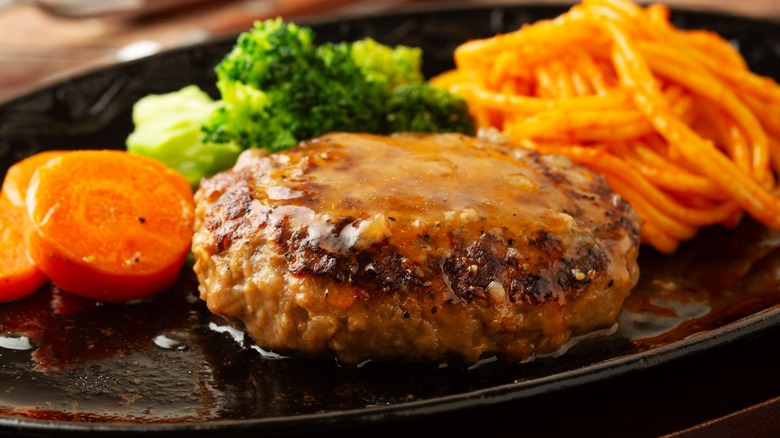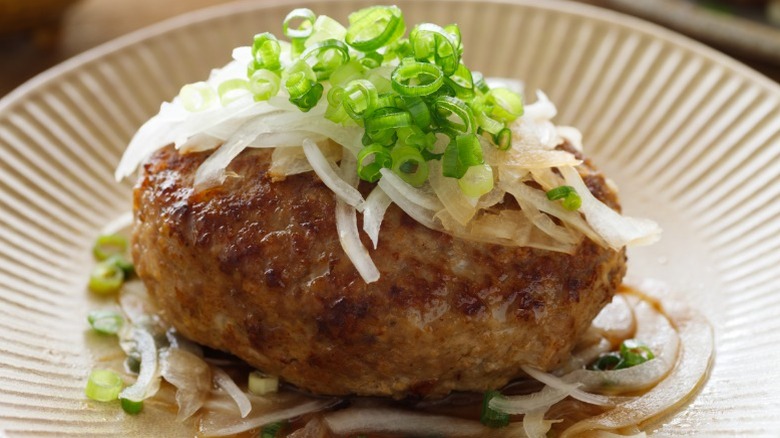Hambagu Is Japan's Flavorful Take On Classic Salisbury Steak
Beef enthusiasts rejoice: There's a Japanese dish that should be on your radar if you love a good Salisbury steak. Hambagu is a casual dish people make at home or order from a yoshoku restaurant — a place that serves Western-style cuisine in Japan. Not to be confused with hanbaga (hamburger), hambagu isn't served on a bun with pickles, tomatoes, and lettuce. However, it does have onions, ketchup, and sometimes cheese.
Hambagu is a minced beef or pork steak coated in gravy. The patty is formed in an oval shape from meat, onions, eggs, and breadcrumbs. The perfectly browned ground beef is soft with a density somewhere between a hamburger patty and a meatball. Unlike its counterparts, hambagu relies on flaky panko breadcrumbs for a crisp crust. The best thing about this dish is that it only requires one frying pan. When the patties are done cooking, the juices disperse, creating a solid foundation for the gravy ingredients to simmer in red wine. All of these elements come together to create a savory and saucy meal that's worth the effort.
The origin of Japan's Hamburg steak
Steak tartare has a fascinating lineage among minced beef dishes. In the 19th century, the Hamburg steak sprang forth, and soon after, the Salisbury steak and hamburger were born. While these foods took off in the Western world, Japan developed its own meat patty dish around the same time. Each one reflects a moment in its culture's history, and hambagu can be traced to Japan's Meiji Restoration.
The Meiji period (1850 to 1889 C.E.) was a time of industrial growth and socioeconomic exchange with Western powers. Before this era, Japan was an isolationist country with a large Buddhist population, making meat consumption uncommon. Yoshoku (Western-style food) became more widespread at the end and continued through the 20th century. Post World War II, hambagu became a commonplace meal that was inexpensive and easy to make. Its staying power holds today as the country's Salisbury steak equivalent, often served with a side of rice and vegetables.

